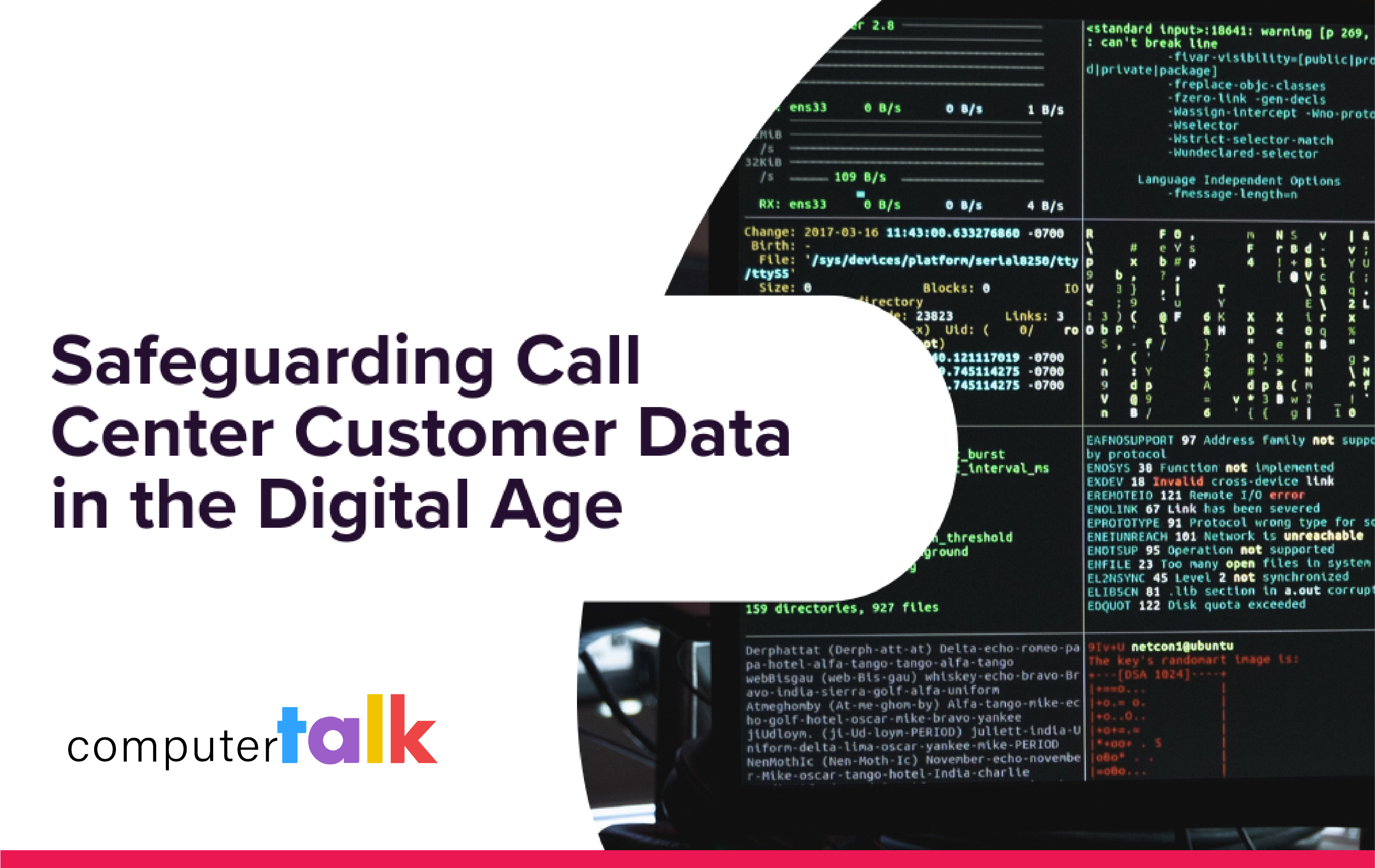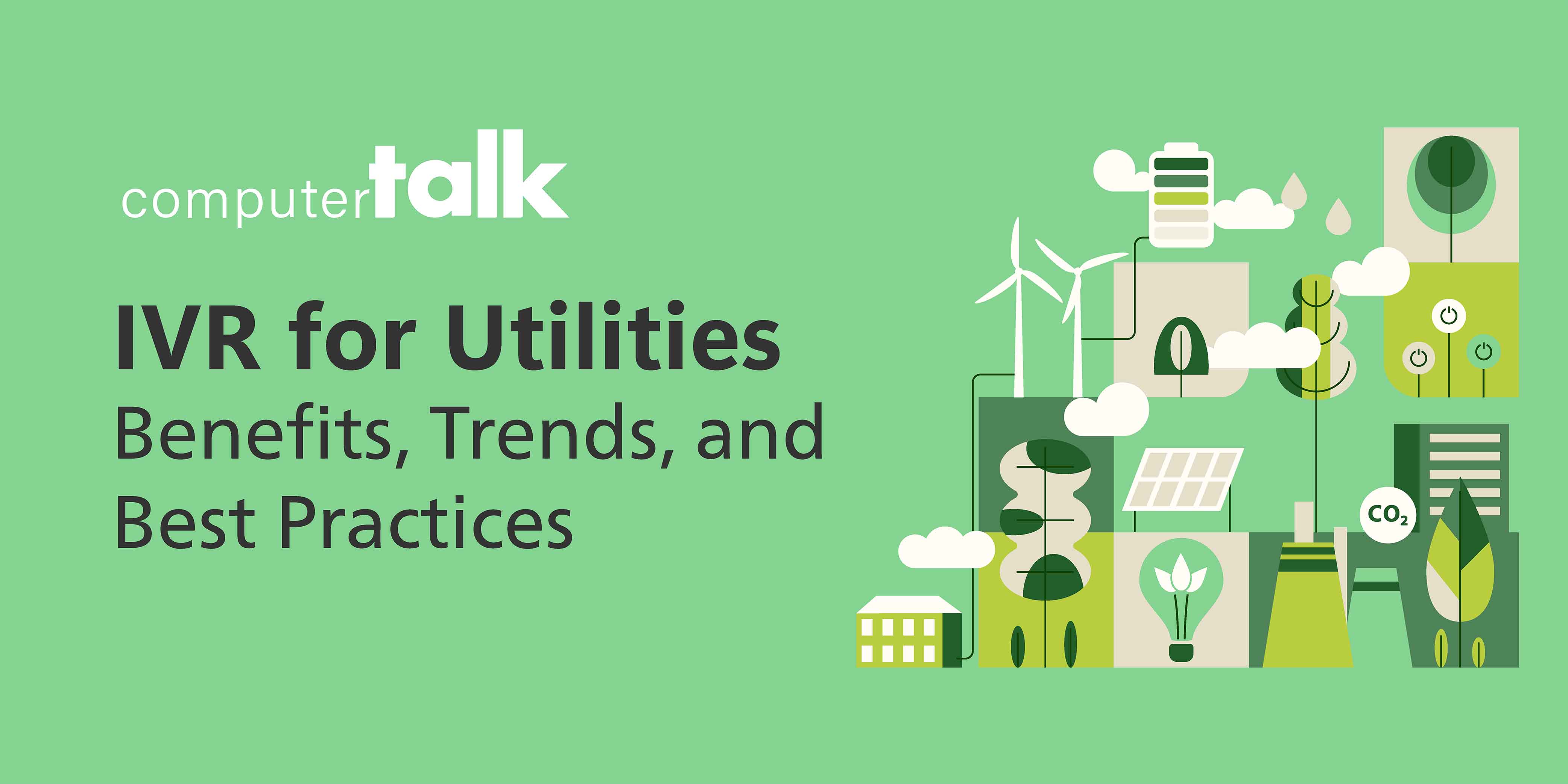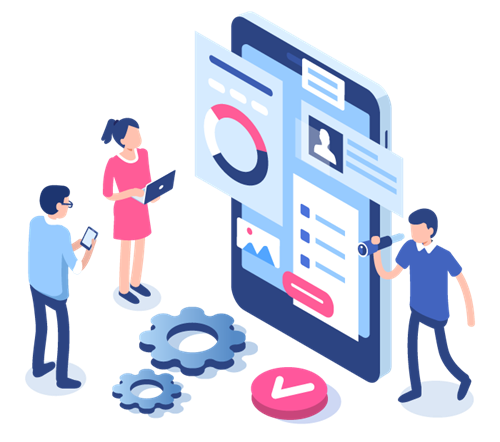How to Handle Different Communication Channels
by Nicole Robinson | Published On June 18, 2025

Discover how to manage different communication channels for customer service, meet rising customer expectations, and create seamless experiences across chat, email, phone, and more.
We’ve come a long way from the days when accessing customer support meant either waiting in a long call queue or constantly refreshing your inbox, searching for an email response.
Today’s customers expect to be able to connect with companies on their preferred channel, whether that’s SMS, social media, or in-app chat. In fact, 70% of consumers say they’d be willing to purchase more from a company that offers support across multiple channels.
Unfortunately, managing multiple communication channels isn’t easy. You need to meet people where they are, adapt to their varied expectations, and deliver responses that fit the context. We’re shifting from the age of multichannel support to omnichannel.
Multichannel just means offering numerous support options, while omnichannel means tying each experience together, ensuring customers don’t have to repeat themselves.
So, how do you deliver an experience that’s both contextual and cohesive? This guide breaks down everything you need to know.
Understanding Customer Expectations by Channel
Customer expectations vary from one channel to the next. If they’re calling your team, they want a response immediately; if they’re sending an email, they usually anticipate waiting longer for an answer (but they won’t wait forever).
Here’s what you need to know about each channel.
Phone: Immediacy, Professionalism, and Empathy
Digital channels might be everywhere, but the phone is still one of the best ways to get in touch with a business, particularly if your customers need answers fast. The phone is the channel that customers turn to when they can’t afford to wait around for someone to see an email or chat message.
That means you need to be aware of the urgency your customers feel here. Answer calls as quickly as possible – even if it’s just with an automated IVR system that aims to either resolve the problem or route the customer to the best agent. Beyond speed, remember the human touch (something 59% of customers think businesses are missing).
Train team members on professionalism (communicating clearly and maintaining a courteous tone) and empathy (active listening and providing personalized solutions).
A few things that can help include:
- Smart routing: Interactive Voice Response (IVR) that funnels callers to the right specialist based on intent, not guesswork.
- Active listening scripts: Instead of robotic “Uh-huh,” agents reflect the concern: “It sounds like you’re locked out and worried about tomorrow’s deadline. Let’s sort that right now.”
- Real-time coaching: Modern contact center software can flag stress words or rising caller volume, prompting supervisors to send immediate guidance to an agent.
Email: Detailed and Accurate Responses Within 24 Hours
Email isn’t flashy, but it’s irreplaceable for detailed explanations, legal confirmations, or attachments. For instance, most customers will contact a company via email if they’re asking about something like an order invoice or a receipt.
Usually, your customers will give you a little extra time to respond – up to around 24 hours. If you take any longer than that, you risk them sending additional messages, calling your team, or getting frustrated. Set internal benchmarks encouraging teams to respond to emails fast but remember that they should be able to provide clarity and detail in their answers.
Personalization is still important here too. Use the customer’s name, and reference their specific concerns, just like you would in a phone call.
Experiment with:
- Templates: Handy templates used for common queries, with dynamic elements that can be adjusted to include a customer’s name or specific information. These are great for saving employees time on responding to customers.
- Visual aids: Embed videos and images into emails if your customer needs help solving a complex problem. These videos can provide additional guidance and make it easier to grasp complex topics.
- Escalation options: Give your customers the option to reach out via another channel if they’re still struggling with a problem. If they can’t figure out a solution with chat, speaking to an agent over the phone might be more helpful.
Live Chat: Instant Help and Multitasking Convenience
Customers expect companies to respond to live chat messages instantly – just like phone calls. Most appreciate the fact that they can deal with other tasks while they wait, like checking social media or responding to an email, but they’ll still want you to answer as quickly as possible.
Set expectations early. Use an automated response on your live chat tool to let your customers know when reps are active, and how long they can expect to wait for a response. Train agents to respond promptly, or give them canned responses they can use for common queries.
Remember you can also take advantage of skills-based routing with chat queries, to help ensure the right agent is handling the interaction.
Other ways to boost your chances of success include:
- Using chatbots: Let bots handle common queries like “Where’s my order?” or password resets; escalate complex cases to humans, complete with the bot’s notes so the customer doesn’t have to repeat their story.
- Transcript hand-offs: The moment a chat ends, email the transcript to the customer and attach it to the CRM record. If they connect later, the agent can check the thread.
- Short responses: If your agent has to type out a long message, or find a resource, ask them to let your customer know with a micro-response like “Let me just grab that for you”.
Social Media: Fast, Public Resolution and Brand Personality
Social media is one of the most complex communication channels for customer service, because conversations aren’t always private. A customer might send you a direct message, in which case you’d follow the same best practices you would for live chat.
However, if they comment on a post, or send you a public message, you need to act even faster to protect your brand’s reputation. The best way to make sure you’re not missing any crucial messages is with social listening tools. They’ll help you monitor messages and mentions across platforms.
As always, respond fast – make sure someone gets back in touch within the hour (less if the issue is urgent). Always show empathy and your brand’s personality in a response, and try to create a “public-private-public” loop.
For instance, if a customer messages you publicly about a delayed package, ask them to share their details in a DM, then let everyone in the comment thread know the issue is resolved.
Additional tips to try to include:
- Support-only handles: Use a specific account like “@BrandHelp” for support requests. This can help to funnel issues away from the channel you use for marketing.
- Proactivity: If you know you’re having issues with something, like broken software, or slow delivery speeds, post about it on social media and tell your customers you’re fixing it.
- Consistency: Make sure your tone stays consistent (professional, friendly, and empathetic) on every social channel.
SMS/Text: Brevity, Clarity, and Quick Resolution
SMS is very similar to live chat. It’s great for direct, personal communication, and most customers are expecting quick brief answers, rather than lengthy guides. Generally, customers will get in touch via text when they want to check in on something, like an order status or a refund.
A great way to make sure they get a quick answer is with AI and automation. You can use bots to handle FAQs via text, or even set up proactive workflows, so your system automatically messages a customer when their order is en route or their refund is being processed.
Keep every conversation quick, concise, and to the point. If your customer responds with more questions, consider asking them to shift to a different channel like phone or email.
Quick tips:
- Remember compliance: Always give customers the option to opt out of receiving text messages, particularly if you’re using them for marketing as well as service.
- Be proactive: If customers agree to receive updates via text, automatically message them about service outages, order details, and new releases.
- Personalize: Still include personal elements, like the customer’s name, when responding to messages, like you would for email.
Self-Service: 24/7 Availability and Autonomy
More than 60% of customers prefer to solve issues on their own, before reaching out to a rep. There are various ways you can help them do this. Comprehensive knowledge bases and FAQs are great for step-by-step guidance for things like setting up a new product.
Chatbots and virtual agents are fantastic for answering common questions, and completing simple tasks, like finding an order tracking number, or updating a customer profile.
The key to mastering self-service is making it as simple as possible for your customers. Give them comprehensive, up-to-date resources, easy-to-use bots, and multimedia guides.
Always ensure that:
- Your bots are up-to-date: Give them the latest details and data, and make sure they can connect to your knowledge bases and CRM software.
- Escalation is available: If customers can’t solve a problem with a bot, make sure they can move on to speaking to a human, and the bot sends the context to the agent.
- You monitor everything: Monitor bots for signs of bias, hallucinations, or non-compliance, and gather feedback from customers.
Key Strategies for Managing Multiple Communication Channels
Juggling multiple communication channels isn’t easy, but it’s crucial if you want to live up to the expectations of today’s customers. Being “present” on various channels isn’t enough. You need to take extra steps to ensure the journey is cohesive and immersive.
1. Invest in an Integrated Platform or CRM System
If you’re using separate tools to manage email, social, chat, and phone support, you’re creating unnecessary complexity. An integrated CRM platform like Zendesk, HubSpot, Dynamics, or Salesforce allows you to view the full customer journey in one place. That means your agents shouldn’t have to ask customers to repeat themselves as they move from one channel to the next.
A fragmented system is one of the fastest ways to sabotage customer experience, so make sure everything is aligned. Remember, being multichannel means being present everywhere, but omnichannel means delivering a unified experience across those channels.
2. Train Agents to Specialize (or Switch Context Without Losing It)
Each communication channel has its own tone, pace, and etiquette:
- A phone call demands verbal empathy and quick thinking.
- An email needs structure, clarity, and attention to detail.
- Social media replies need to be sharp, on-brand, and public-ready.
That means brands need to either specialize agents by channel (which can work well for larger teams) or train agents to use unified inboxes so they can switch between channels without losing track. That includes knowing how to adapt their tone, manage multiple chats without sacrificing quality, and pick up where another channel left off.
3. Keep a Consistent Brand Voice (Everywhere)
Wherever you connect with your customer, you should be providing a consistent experience. Inconsistency is jarring, and it can leave your customers wondering if they’re really speaking to your team. Your brand voice shouldn’t do a personality swap between channels. Whether a customer is DMing you on Instagram, speaking to someone on the phone, or reading an FAQ, they should feel like they’re talking to the same brand.
Templates and brand guidelines can help here. Define how your agents should adapt their voice to each channel, but maintain your overall personality.
4. Prioritize the Right Channels for the Right Customers
Different customers have different preferences. Gen Z and younger buyers usually prefer fast-paced channels like text and chat, while older consumers might prefer the phone. You don’t necessarily need to manage every channel – just the ones that actually appeal to your customers.
Analyze your customer base and their specific preferences, and map their journey through various communication channels. Find out where you should be focusing your attention, and prioritize the most important channels first. As customer preferences change, shift with them.
5. Track What Matters: KPIs That Drive Smart Decisions
Finally, you can’t improve what you don’t measure. You should be collecting information from every communication channel to help you strengthen the customer experience. Focus on relevant KPIs that give insights into both efficiency and customer satisfaction.
For instance, you might monitor things like first response time, resolution time, and CSAT (Customer Satisfaction) scores across channels. Pay attention to any specific channels where performance starts to dwindle, as that could indicate you need to invest in extra training.
Common Challenges and How to Overcome Them
Even with the best strategy, handling multiple communication channels can be challenging. Here are some of the major issues you might face, and how to fix them. As you embrace new communication channels, here are the challenges to watch out for.
- Information silos: To deliver a consistent, cohesive experience, you need a unified view of your customer’s journey. Make sure your teams aren’t operating in silos, forcing customers to repeat themselves. A unified CRM platform gives agents access to the full customer story.
- Delayed responses: Being available everywhere is great, until it leads to burnout and slow replies. Overextending your support team across too many channels without proper staffing is a recipe for failure. Use historical data to forecast volume trends and staff accordingly. Deploy automation and AI to offload simple queries and keep queues manageable.
- Misaligned messaging: When marketing, support, and social teams don’t speak the same language, customers notice. This misalignment can cause confusion or even contradict your brand promises. Solve it by creating a brand tone guide and regularly syncing cross-functional teams to align on messaging and campaign timing.
- Misinterpretation: What sounds clear to an agent may feel curt or robotic to a customer, especially on text-based platforms. Provide agents with training on digital tone, use empathy cues, and encourage double-checking tone before sending.
Future Trends in Customer Communication
Technology won’t slow down, and neither will customer expectations. Keep an eye on the emerging trends shaping future interactions, such as:
- Predictive and agentic AI: Platforms now sift usage patterns and ticket history to flag churn risk or likely hiccups. Example: An e-commerce app spots repeated “payment failed” errors, auto-alerts the user, and pre-loads a fix before the first angry tweet. The takeaway: feed your models clean, unified data today; reap proactive wins tomorrow.
- Voice assistants: “Hey Google, ask why my energy bill spiked.” Utilities, banks, and retailers are already prototyping Alexa Skills that pull authenticated account info. Voice cuts friction for busy or visually impaired customers and slashes handle time for routine balances or order checks. Start small: FAQs via voice today, transactional queries next.
- Hyper personalization: With cookies disappearing from the web, first-party interaction data is crucial. Imagine a chatbot greeting: “Welcome back, Maya. Need help with the earbuds you added to cart yesterday?” Contextual cues like purchase cadence, channel preference, and even sentiment scores let you serve fewer, smarter messages.
- Asynchronous messaging: WhatsApp, Instagram DM, and Slack Connect all champion “reply when you can” conversations. Agents handle multiple threads; customers dip in and out between meetings. The trick is maintaining context: a unified inbox must time-stamp, tag, and resurrect earlier messages instantly so no one scrolls for history.
Ready to Rethink Your Communication Strategy?
Customers don’t judge your support by how many channels you’ve launched. They judge by how seamless the story feels when they hop between them.
Start upgrading your communication strategy now. Map every channel and workflow, and align your people and data with the right tools, resources, and training. Invest in comprehensive reporting and analytical tools so you can adapt as the landscape continues to change.
Remember that every customer journey should feel effortless, even if customers are jumping between channels. Need more help? Check out our guide to using omnichannel communications and how they compare to multichannel strategies.
More from our blog
 Ensuring that sensitive customer data remains inviolate is not just a matter of compliance; it's vital for maintaining trust and credibility in the industry.
Ensuring that sensitive customer data remains inviolate is not just a matter of compliance; it's vital for maintaining trust and credibility in the industry.
 Learn all about how IVR solutions benefit utilities companies, and discover the best practices for using IVRs effectively in this guide.
Learn all about how IVR solutions benefit utilities companies, and discover the best practices for using IVRs effectively in this guide.
.png?sfvrsn=458e8bce_1) You probably know what Microsoft Teams is and you’ve likely used it for internal communication within your organization.
You probably know what Microsoft Teams is and you’ve likely used it for internal communication within your organization.

